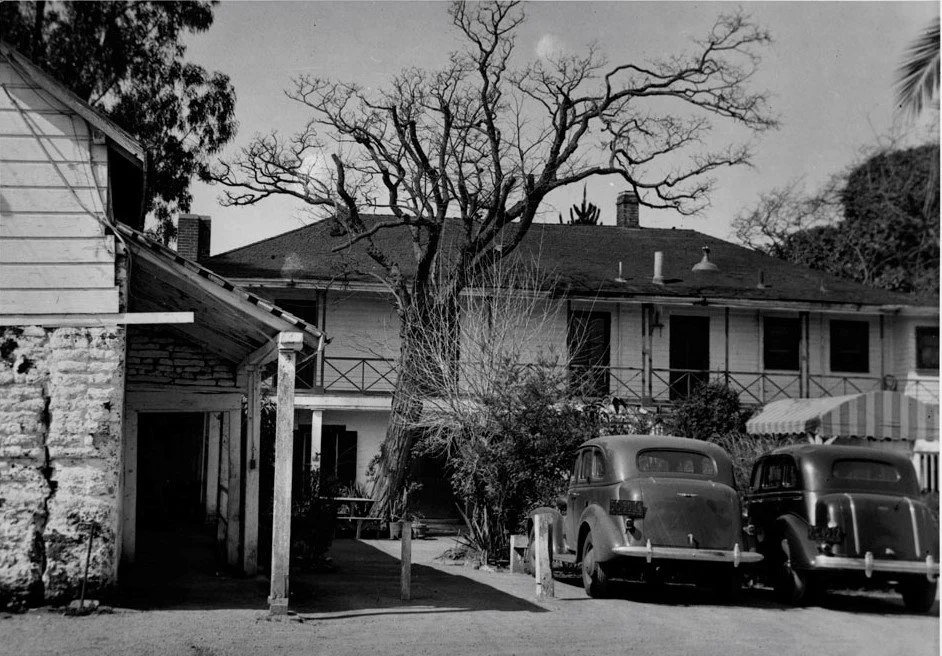The Rancho San Pablo Casino
This photo from the mid-1930s is thought to be the Castro Adobe after it was refurbished as a casino.
This is an excerpt from “The Adobe at Cerrito Creek,” a 12-page history of the Castro Adobe, from its beginnings in 1837 to its destruction by arsonists in 1956, written in 1975 by El Cerrito Fire Department Chief Inspector Earl Scarbough. This section describes the building’s existence as a casino in the 1930s.
As the twentieth century became a reality, Don Victor’s adobe lay in abandonment like that of his father's in San Pablo; weeds and thistles grew over the orchards and gardens, and ruin and neglect stalked the once happy scenes of rancho days. The Grandees were dead, the adobes in ruin and a magnificent rancho was no more. Over the years the San Pablo Adobe passed into private hands and became a warehouse for the Adobe Drug Store that had been added to the front of the old building. The Adobe was finally demolished in 1954 to make room for a motel. A plaque on the northwest corner of the Thunderbird Motel at the corner of Church Lane and San Pablo Avenue marks the spot where the historic old hacienda once stood.
In El Cerrito, Don Victor’s Adobe fell into decay until the early 1930's when "Big Bill", William A. Pechart, a Sacramento gambler, took a lease on the building and after extensive remodeling turned the adobe into a sophisticated gambling casino, aptly named "The Rancho San Pablo."
The old chapel was refurbished into a fabulous dance hall with rosewood paneling. Unbelievable thick rugs covered the floors of the gambling rooms and the old adobe again came to life as croupiers dressed in satin lapeled jackets spun roulette wheels and snapped the dice, while chorus girls dressed in Spanish costumes as well as entertainers Edgar Bergan, Lillian Roth and others provided gaiety to the merry makers.
One can wonder if any of the jubilant crowds that flocked into the casino ever gave thoughts to the buildings pastoral past when it was the proud home of a fine gentleman; where gold seekers rested from their journey, where children played youthful games in the patio and where a family bowed their heads in worship at a small chapel, where their dreams , labors, fortune and misfortunes became the realities of their life .
The end of Rancho San Pablo as a gambling casino came during World War II. A dog racing track (also owned by Pechart) that flourished at the back of the casino closed, and the property was converted into a mobile home court that housed thousands of shipyard workers. "Big Bill" moved on to Reno where he became a pit boss at the Mapes Hotel and in 1965 died of a heart attack. When the lights of the casino were turned off for the last time the adobe once more returned to solitude.
After the war the mobile homes moved out and a drive-in movie theater was erected on the site. The old hacienda remained vacant through the years. Automobiles were driven across and parked over the tiny cemetery. Juveniles, most of them high school boys, often prowled the premises. Many windows, some of them heavily barred, had been broken and all of the valuables had long been removed from the adobe. The interior of the structure became littered with debris and fallen timbers.
Excerpted from “The Adobe at Cerrito Creek,” a 12-page history of the Castro Adobe. Read the entirety here (PDF file).


